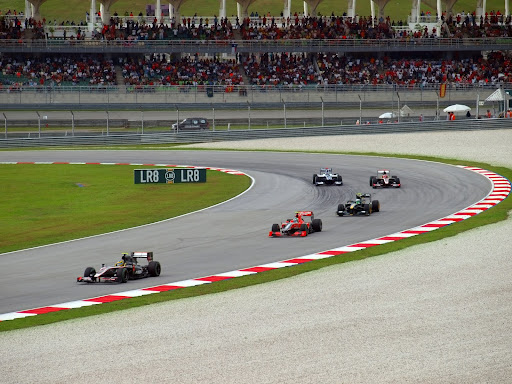Formula 1 racing is much more than just speed; it is a complex ballet of strategy, skill, and precision. Among the most thrilling aspects of F1 racing are the manoeuvres of overtaking and defending. These elements not only showcase a driver’s raw talent but also their ability to think several steps ahead of their competitors. The excitement of these manoeuvres keeps fans on the edge of their seats, as every move can change the course of the race.
Overtaking – The Pursuit of Opportunity
Overtaking in F1 is an art form that requires perfect timing, immense skill, and a deep understanding of both the car and the track. Drivers must carefully judge the speed, braking points, and racing lines of their rivals to find the perfect moment to make a move. Key overtaking zones often include the long straights and heavy braking zones of the track, where a driver can capitalise on slipstream and late braking to pass their opponent. It’s a high-risk, high-reward scenario that often leads to heart-stopping moments on the track.
The Role of DRS and ERS
The Drag Reduction System (DRS) and Energy Recovery System (ERS) have added new dimensions to overtaking in recent years. DRS allows drivers to reduce aerodynamic drag on certain straights, giving them a speed boost to aid in overtaking. ERS, on the other hand, provides additional power harvested from braking and exhaust gases, which can be deployed strategically throughout the race. Mastery of these systems is crucial for maximising overtaking opportunities. Drivers must understand the optimal times to activate these systems to gain an advantage without compromising their overall race strategy.
Defending – The Shield of the Warrior
While overtaking is about aggression and seizing opportunities, defending is about resilience and precision. A driver defending their position must place their car optimally on the track to block the overtaking attempts of their rivals. This involves understanding the racing lines and knowing when to take a wider or tighter line to prevent a pass. It’s a tactical game where one wrong move can lead to losing not just one position, but several.
The Balance of Defense
Defending drivers must be cautious not to overcommit and leave themselves vulnerable to counter-attacks. The balance between aggressive defence and maintaining optimal speed is delicate. Over-defending can lead to tyre wear and mistakes, while under-defending can result in losing positions. The ability to anticipate the rival’s next move and react accordingly is what separates the best defenders from the rest. It’s about maintaining control and composure, even when the pressure is mounting from the car behind.
The Psychological Battle
Overtaking and defending are not just physical challenges but also psychological battles. Drivers must maintain focus and composure under immense pressure, making split-second decisions that can determine the outcome of the race. The mental fortitude required to execute these manoeuvres while racing at speeds exceeding 200 mph is immense and truly separates the great from the good. The psychological warfare between drivers, where mind games and feints play a crucial role, adds an extra layer of complexity and excitement to the sport.
Conclusion
The art of overtaking and defending in F1 racing is a spectacle that captivates fans around the world. It showcases the pinnacle of driving skill and the strategic depth of the sport. Whether it’s a daring overtake on a straight or a masterful defence through a series of corners, these moments define the drama and excitement of Formula 1 racing. The combination of physical skill, strategic thinking, and psychological resilience makes these manoeuvres the very essence of what makes F1 racing so thrilling and unpredictable.
Written by Gareth Booth


Leave a Reply